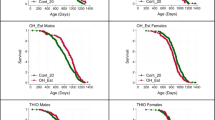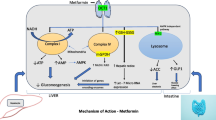Abstract
Lutein is an oxygenated carotenoid (xanthophyll) found in dark green leafy vegetables. High intakes of lutein may lower the risk of age-related macular degeneration. Current understanding of human lutein metabolism as it might occur in vivo is incomplete. Therefore, we conducted a feasibility study where we dosed a normal adult woman with 14C-lutein (125 nmol, 36 nCi 14C), dissolved in olive oil (0.5 g/kg body weight) and mixed in a banana shake. Blood, urine, and feces collected before the dose was administered served to establish baseline values. There-after, blood was collected for 63 d following the dose, while feces and urine were collected for 2 wk post-dose. The 14C contents in plasma, urine, and feces were measured by accelerator MS. The 14C first appeared in plasma 1 h after dosing and reached its highest level,≈2.08% of dose/L plasma, at 14 h post-dose. The plasma pattern of 14C did not include a chylomicrons/VLDL (intestinal) peak like that when the same subject received 14C-β-carotene (a previous test), suggesting that lutein was handled differently from β-carotene by plasma lipoproteins. Lutein had an elimination half-life (t 1/2) of≈10 d. Forty-five percent of the dose of 14C was eliminated in feces and 10% in urine in the first 2 d after dosing. Quantifying human lutein metabolism is a fertile area for future research.
Similar content being viewed by others
Abbreviations
- AMD:
-
age-related macular degeneration
- AMS:
-
accelerator MS
- AUC:
-
area under the concentration-time curve
- AUMC:
-
area under the moment curve
- DANR:
-
Division of Agriculture and Natural Resources at the University of California, Davis
- LLNL:
-
Lawrence Livermore National Laboratories
- MP:
-
macular pigment
- MST:
-
mean sojourn time
References
Sommerburg, O., Keunen, J.E., Bird, A.C., and van Kuijk, F.J. (1998) Fruits and Vegetables That Are Sources for Lutein and Zeaxanthin: The Macular Pigment in Human Eyes, Br. J. Ophthalmol. 82, 907–910.
Eye Disease Case-Control Study Group (1993) Antioxidant Status and Neovascular Age-Related Macular Degeneration, Arch. Ophthalmol. 111, 104–109.
Seddon, J.M., Ajani, U.A., Sperduto, R.D., Hiller, R., Blair, N., Burton, T.C., Farber, M.D., Gragoudas, E.S., Haller, J., Miller, D.T., et al. (1994) Dietary Carotenoids, Vitamins A, C, and E, and Advanced Age-Related Macular Degeneration. Eye Disease Case-Control Study Group, JAMA 272 1413–1420.
Schalch, W., Dayhaw-Barker, P., and Barker, F. (1999) The Carotenoids of the Human Retina, CRC Press, Boca Raton, Florida.
Schalch, W. (1992) Carotenoids in the Retina—A Review of Their Possible Role in Preventing or Limiting Damage Caused by Light and Oxygen, in Free Radicals and Aging (Emerit, I., and Chance, B., eds.), pp. 280–298, Birkhauser Verlag, Basel, Switzerland.
Snodderly, D.M. (1995) Evidence for Protection Against Age-Related Macular Degeneration by Carotenoids and Antioxidant Vitamins, Am. J. Clin. Nutr. 62, 1448S-1461S.
Rapp, L.M., Maple, S.S., and Choi, J.H. (2000) Lutein and Zeaxanthin Concentrations in Rod Outer Segment Membranes from Perifoveal and Peripheral Human Retina, Invest. Ophthalmol. Vis. Sci. 41, 1200–1209.
Khachik, F., Beecher, G.R., and Smith, J.C., Jr. (1995) Lutein, Lycopene, and Their Oxidative Metabolites in Chemoprevention of Cancer, J. Cell. Biochem. Suppl. 22, 236–246.
Landrum, J.T., Bone, R.A., Joa, H., Kilburn, M.D., Moore, L.L., and Sprague, K.E. (1997) A One Year Study of the Macular Pigment: The Effect of 140 Days of a Lutein Supplement, Exp. Eye Res. 65, 57–62.
Bone, R.A., Landrum, J.T., Guerra, L.H., and Ruiz, C.A. (2003) Lutein and Zeaxanthin Dietary Supplements Raise Macular Pigment Density and Serum Concentrations of These Carotenoids in Humans, J. Nutr. 133, 992–998.
Liang, Y., White, W.S., Yao, L., and Serfass, R.E. (1998) Use of High-Precision Gas Isotope Ratio Mass Spectrometry to Determine Natural Abundance 13C in Lutein Isolated from C3 and C4 Plant Sources, J. Chromatogr. A 800, 51–58.
Yao, L., Liang, Y., Trahanovsky, W.S., Serfass, R.E., and White, W.S. (2000) Use of a 13C Tracer to Quantify the Plasma Appearance of a Physiological Dose of Lutein in Humans, Lipids 35, 339–348.
Kelm, M.A., Flanagan, V.P., Pawlosky, R.J., Novotny, J.A., Clevidence, B.A., and Britz, S.J. (2001) Quantitative Determination of 13C-Labeled and Endogenous β-Carotene, Lutein, and Vitamin A in Human Plasma, Lipids 36, 1277–1282.
Lienau, A., Glaser, T., Tang, G., Dolnikowski, G.G., Grusak, M.A., and Albert, K. (2003) Bioavailability of Lutein in Humans from Intrinsically Labeled Vegetables Determined by LC-APCIMS, J. Nutr. Biochem. 14, 663–670.
Dueker, S.R., Jones, A.D., and Clifford, A.J. (1998) Protocol Development for Biological Tracer Studies, Adv. Exp. Med. Biol. 445, 363–378.
Dueker, S.R., Lin, Y., Buchholz B.A., Schneider, P.D., Lame, M.W., Segall, H.J., Vogel, J.S., and Clifford, A.J. (2000) Longterm Kinetic Study of β-Carotene, Using Accelerator Mass Spectrometry in an Adult Volunteer, J. Lipid Res. 41, 1790–1800.
Burri, B.J., and Clifford, A.J. (2004) Carotenoid and Retinoid Metabolism: Insights from Isotope Studies, Arch. Biochem. Biophys. 430, 110–119.
Le Vuong, T., Buchholz, B.A., Lame, M.W., and Dueker, S.R. (2004) Phytochemical Research Using Accelerator Mass Spectrometry, Nutr. Rev. 62, 375–388.
Leenheer, A., Lambert, W., and Neils, H. (1992) Modern Chromatographic Analysis of Vitamins, 2nd edn., Marcel Dekker, New York.
Pella, E. (1990) Elemental Organic Analysis, Am. Lab. 22, 116–125.
Castenmiller, J.J., West, C.E., Linssen, J.P., van het Hof, K.H., and Voragen, A.G. (1999) The Food Matrix of Spinach Is a Limiting Factor in Determining the Bioavailability of β-Carotene and to a Lesser Extent of Lutein in Humans, J. Nutr. 129, 349–355.
Chung, H.Y., Rasmussen, H.M., and Johnson, E.J. (2004) Lutein Bioavailability Is Higher from Lutein-Enriched Eggs Than from Supplements and Spinach in Men, J. Nutr. 134, 1887–1893.
van het Hof, K.H., Brouwer, I.A., West, C.E., Haddeman, E., Steegers-Theunissen, R.P., van Dusseldorp, M., Weststrate, J.A., Eskes, T.K., and Hautvast, J.G. (1999) Bioavailability of Lutein from Vegetables Is 5 Times Higher Than That of β-Carotene, Am. J. Clin. Nutr. 70, 261–268.
Chitchumroonchokchai, C., Schwartz, S.J., and Failla, M.L. (2004) Assessment of Lutein Bioavailability from Meals and a Supplement Using Simulated Digestion and Caco-2 Human Intestinal Cells, J. Nutr. 134, 2280–2286.
Borel, P., Grolier, P., Armand, M., Partier, A., Lafont, H., Lairon, D., and Azais-Braesco, V. (1996) Carotenoids in Biological Emulsions: Solubility, Surface-to-Core Distribution, and Release from Lipid Droplets, J. Lipid Res. 37, 250–261.
Kostic, D., White, W.S., and Olson, J.A. (1995) Intestinal Absorption, Serum Clearance, and Interactions Between Lutein and β-Carotene When Administered to Human Adults in Separate or Combined Oral Doses, Am. J. Clin. Nutr. 62, 604–610.
Kurilich, A.C., Britz, S.J., Clevidence, B.A., and Novotny, J.A. (2003) Isotopic Labeling and LC-APCI-MS Quantification for Investigating Absorption of Carotenoids and Phylloquinone from Kale (Brassica oleracea), J. Agric. Food Chem. 51, 4877–4883.
Novotny, J.A., Kurilich, A.C., Britz, S.J., And Clevidence, B.A. (2005) Plasma Appearance of Labeled β-Carotene, Lutein, and Retinol in Humans After Consumption of Isotopically Labeled Kale, J. Lipid Res. 46, 1896–1903.
Lemke, S.L., Dueker, S.R., Follett, J.R., Lin, Y., Carkeet, C., Buchholz, B.A., Vogel, J.S., and Clifford, A.J. (2003) Absorption and Retinol Equivalence of β-Carotene in Humans Is Influenced by Dietary Vitamin A Intake, J. Lipid Res. 44, 1591–1600.
Clevidence, B.A., and Bieri, J. (1993) Association of Carotenoids with Human Plasma Lipoproteins, Methods Enzymol. 214, 33–46.
Reboul, E., Abou, L., Mikail, C., Ghiringhelli, O., Andre, M., Portugal, H., Jourdheuil-Rahmani, D., Amiot, M.J., Lairon, D., and Borel, P. (2005) Lutein Transport by Caco-2 TC-7 Cells Occurs Partly by a Facilitated Process Involving the Scavenger Receptor Class B Type I (SR-BI), Biochem. J. 387, 455–461.
Thurmann, P.A., Schalch, W., Aebischer, J.C., Tenter, U., and Cohn, W. (2005) Plasma Kinetics of Lutein, Zeaxanthin, and 3-Dehydro-lutein After Multiple Oral Doses of a Lutein Supplement, Am. J. Clin. Nutr. 82, 88–97.
Hartmann, D., Thurmann, P.A., Spitzer, V., Schalch, W., Manner, B., and Cohn, W. (2004) Plasma Kinetics of Zeaxanthin and 3′-Dehydro-lutein After Multiple Oral Doses of Synthetic Zeaxanthin, Am. J. Clin. Nutr. 79, 410–417.
Burri, B.J., Neidlinger, T.R., and Clifford, A.J. (2001) Serum Carotenoid Depletion Follows First-Order Kinetics in Healthy Adult Women Fed Naturally Low Carotenoid Diets, J. Nutr. 131, 2096–2100.
Rock, C.L., Swendseid, M.E., Jacob, R.A., and McKee, R.W. (1992) Plasma Carotenoid Levels in Human Subjects Fed a Low Carotenoid Diet, J. Nutr. 122, 96–100.
Author information
Authors and Affiliations
Corresponding author
About this article
Cite this article
de Moura, F.F., Ho, C.C., Getachew, G. et al. Kinetics of 14C distribution after tracer dose of 14C-lutein in an adult woman. Lipids 40, 1069–1073 (2005). https://doi.org/10.1007/s11745-005-1471-4
Received:
Accepted:
Issue Date:
DOI: https://doi.org/10.1007/s11745-005-1471-4




